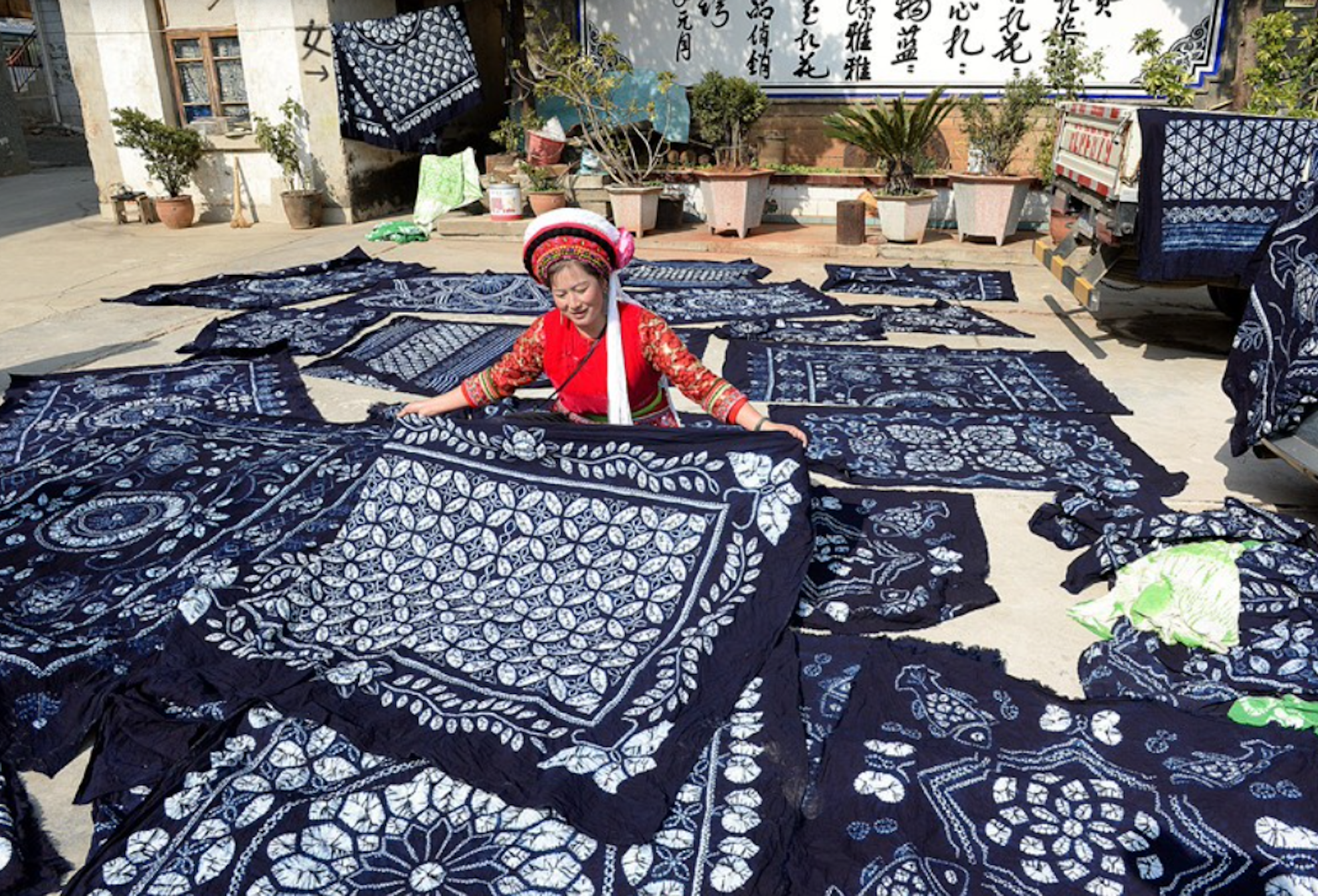
Dali Traditional Tie-dyeing
As one of the famous tourist destinations in Yunnan Province, Dali is rich in historical and natural relics. It is a great place to explore traditional Chinese culture and minority culture. Its history stretches back to the kingdom of Nanzhao (8th century). As one of the famous tourist destinations in Yunnan Province, Dali is rich in historical and natural relics. It is a great place to explore traditional Chinese culture and minority culture. Its history stretches back to the kingdom of Nanzhao (8th century).
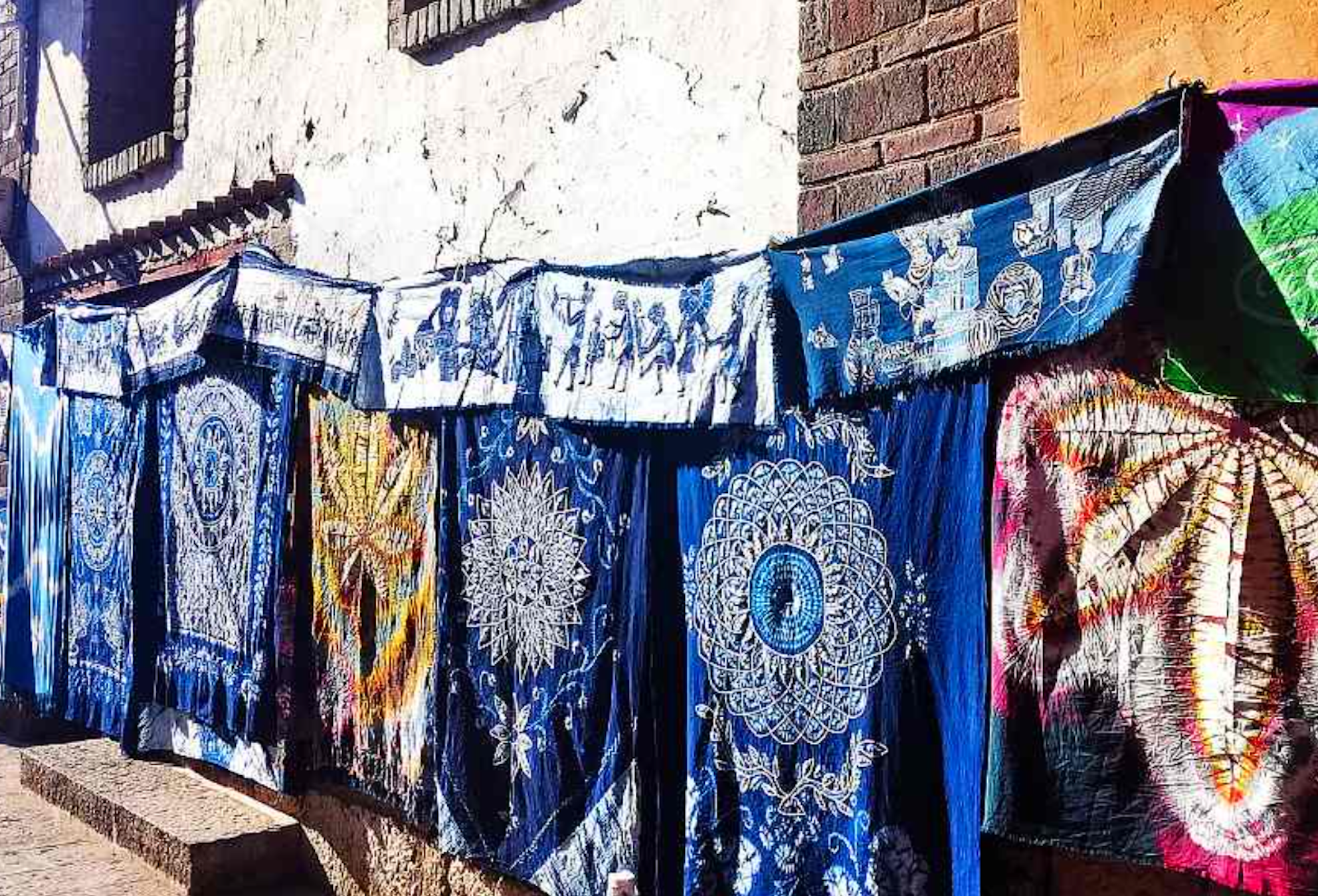
Dali is one of the main residences of the Bai people. There is a unique craft-Dali traditional tie-dyeing, has been handed down from generation to generation for centuries. According to historical records, these ancient textile dyeing and weaving techniques first appeared in the area of Dali during the Eastern Han Dynasty.
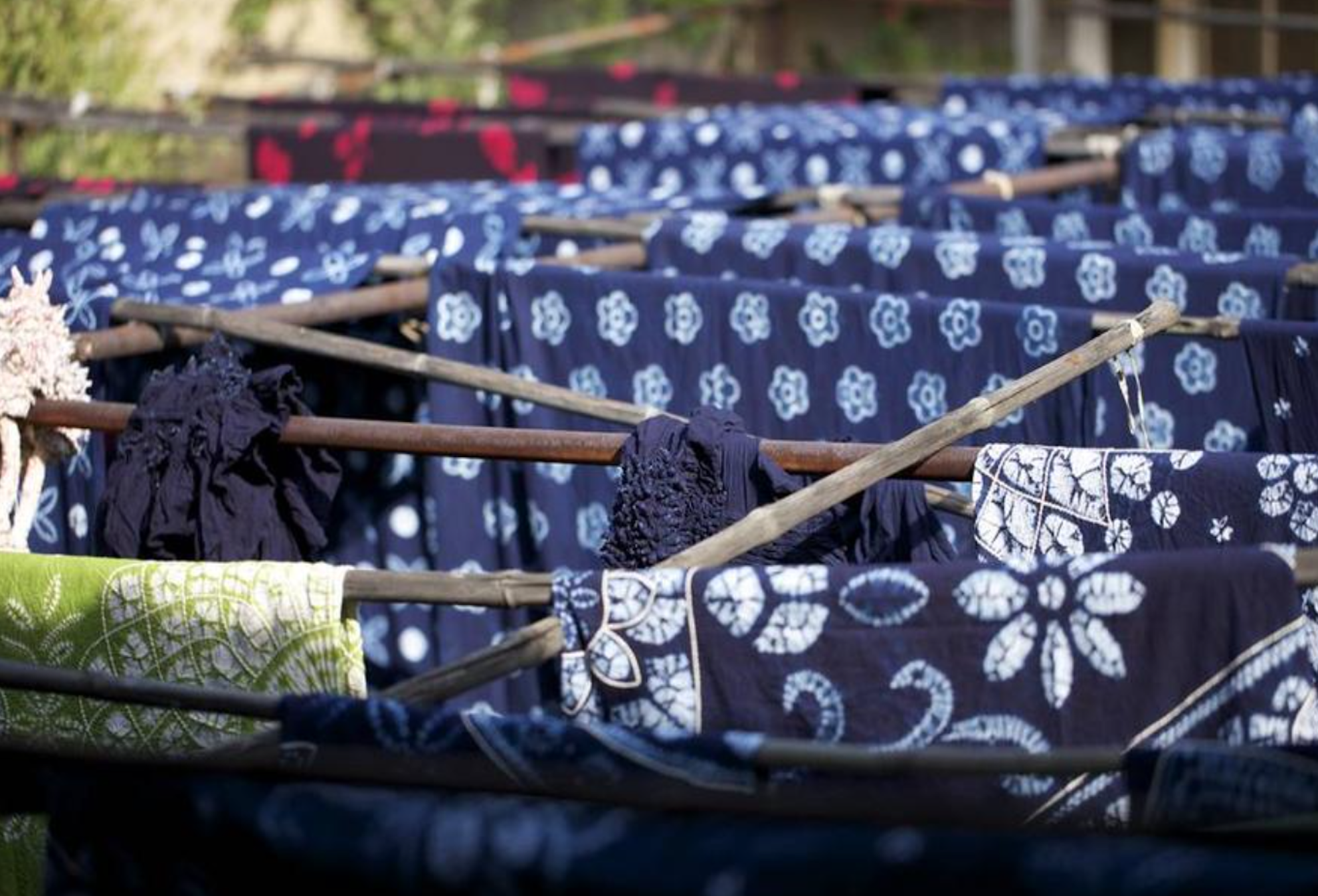
During the Ming and Qing Dynasties, the technique in the Erhai area had reached a high level among the Bai people, and a cloth-dyeing association was founded at that time. Today the Dali dyeing and weaving industry is continuously developing and Zhouchen village is known to all for its famous manual dyeing and weaving techniques.

The process of creating tie-dye textiles is a painstaking procedure that includes about 16 steps. It will start from creating the dye. The dark blue color of tie-dye comes from the Isatis plant. The patterns will be drawn on white papers, then transferred to a plastic sheet by piercing holes in the paper. Next, the white cloth will be placed under the plastic sheet and the dye will be painted onto the plastic. The dye will flow through the plastic onto the cloth and transfer the pattern onto the paper.
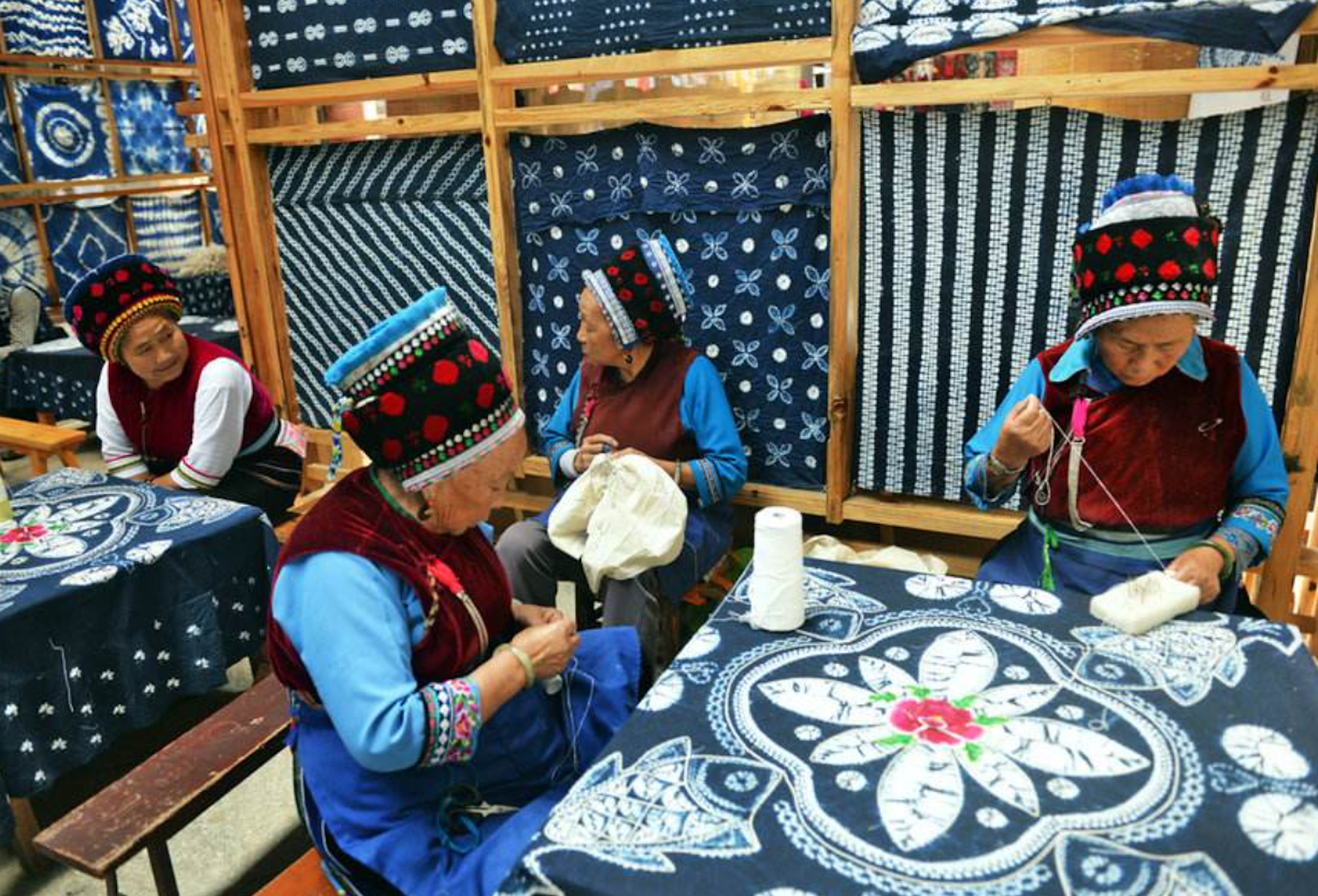
|
Different patterns will be stitched into the cloth in this step, and then the cloth will be washed with warm water and bleached to remove waxes and oils in the fabric. After that cloth will be placed into the dye solution while stirring the dye until the patterns start to appear. Then the fabric will be pulled out of the dye and oxidized for at least 20 minutes.
|
The whole procedure is nearly finished till this step, we just need to dry them in the sunshine, remove the stitches, wash out the excess dye, and dry it again in the next steps. The work will be completed after some ironing and clipping.
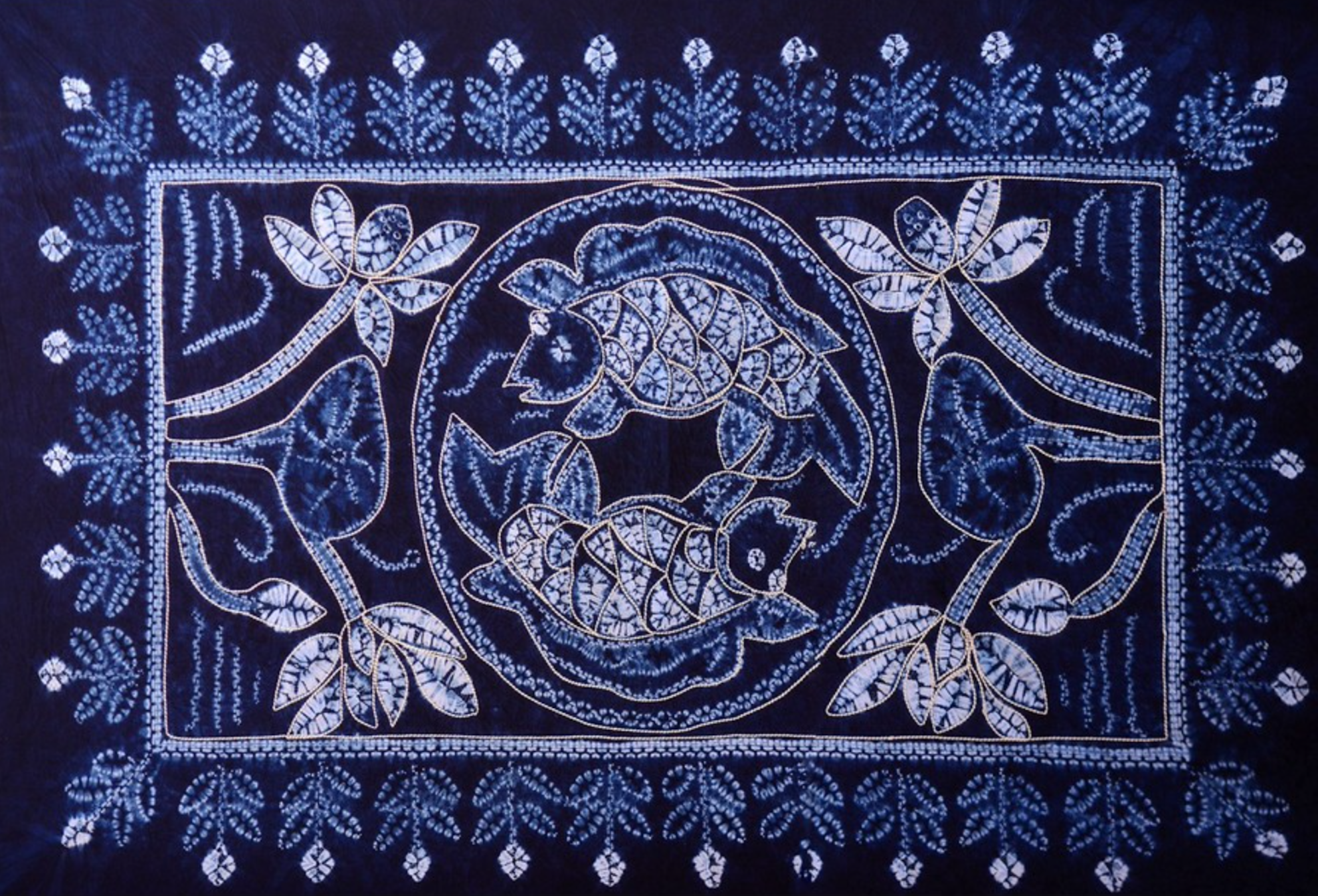
In Dali, the traditional handicraft techniques are being steadily improved. People also incorporated many of these techniques within their product designs, which combined with the modern tourism industry. Nowadays, many tie-dyed clothes can be purchased online or be purchased in different attractions, which brought new vitality to this traditional craft.
Photo Resource: Internet
If there's any copyright issue involved, please contact us to delete.
